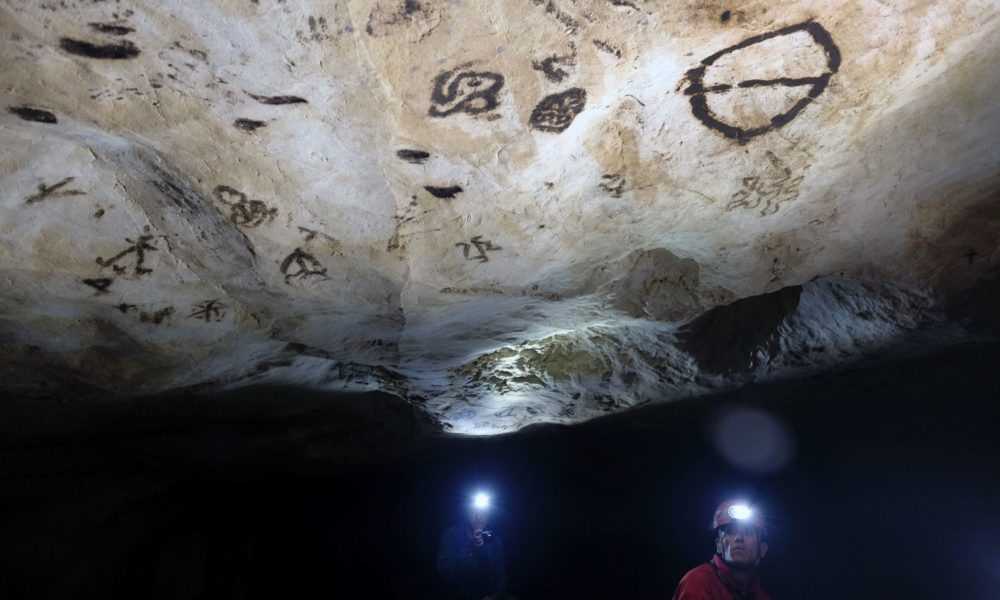
LECCE – “Porto Badisco, la Grotta dei Cervi” (Adda Editore) è il nuovo libro fotografico di Leonello Bertolucci (Adda Editore) presentato in occasione dei 50 anni dalla scoperta della Grotta dei Cervi, definita la Cappella Sistina del Neolitico. Cinquant’anni dopo la sua scoperta, un viaggio fotografico suggestivo corredato dai testi di Maria Piccarreta, Andrea Indellicati, Maurizio Nocera, Nini Ciccarese, Leonello Bertolucci. Il volume verrà presentato mercoledì 22 gennaio, alle ore 18.30, alla libreria Liberrima di Lecce.
Il prossimo 1° febbraio, infatti, saranno passati esattamente 50 anni dalla scoperta della Grotta dei Cervi, a Porto Badisco, da parte di 5 membri del gruppo speleologico di Maglie: Mattioli, Albertini, Mazzotta, Evangelisti, Rizzo. Ma ne saranno passati tra 5.000 e 8.000 da quando qualche “Picasso neolitico” ha reso questo sito unico al mondo con gli oltre 3.000 pittogrammi che lo decorano. Il fotografo Leonello Bertolucci ha percorso con gli occhi e con la macchina fotografica quei cicli di pittogrammi in ocra rossa e guano di pipistrello camminando idealmente su di un ponte: quello tra le immagini della contemporaneità, le fotografie che permeano le nostre vite, e le immagini di chi, alcune migliaia di anni fa, già sentiva il bisogno di “fotografare” il suo tempo. Ma se la fotografia porta sempre un’impronta di realtà, viene da chiedersi di quale realtà portino traccia i misteriosi e in gran parte incomprensibili pittogrammi della Grotta dei Cervi, per la maggior parte astratti ai nostri occhi.
All’iniziativa saranno presenti, oltre all’autore e all’editore, Maria Piccarreta (Soprintendente), Edoardo Winspeare (regista) e Maurizio Nocera (scrittore e storico).
- Porto Badisco’s “Grotta dei Cervi” in Salento (discovered on 1 February 1970 near Otranto, in Apulia, Italy) host the most important Neolithic parietal art complex in Europe, defined the “Sistine Chapel of prehistory”. Porto Badisco’s pictogram cycle (in red ocher and in bat droppings) seems to be located in the middle of Neolithic (between 8000 and 5000 years ago). Porto Badisco has been identified as the mythological site of the landing of Aeneas, narrated in Virgil’s Eneide. This archaeological site is strictly closed and is not accessible to the public (we have exceptionally obtained permission from “Archaeological Superintendence, Fine Art and Landscape of Brindisi, Lecce and Taranto”.) The cave is a complex of underground tunnels connected to each other and is divided into three large corridors of 200 meters each, reaching the depth of 26 meters below sea level. Very impressive is, for example, the large number of baby fingerprints; there are also many spirals, symbol of life and regeneration, linked to the cult of Mother Dea. The pictogram of the shaman dancing has entered in the collective imagination, and today has become the symbol of Salento: we find it even on T-shirts and gadgets. With a part of the numerous archaeological finds found in the Grotta dei Cervi, a permanent exhibition was recently organized at the Aragonese Castle of Otranto. (photo © Leonello Bertolucci/Geety Images)
- Porto Badisco’s “Grotta dei Cervi” in Salento (discovered on 1 February 1970 near Otranto, in Apulia, Italy) host the most important Neolithic parietal art complex in Europe, defined the “Sistine Chapel of prehistory”. Porto Badisco’s pictogram cycle (in red ocher and in bat droppings) seems to be located in the middle of Neolithic (between 8000 and 5000 years ago). Porto Badisco has been identified as the mythological site of the landing of Aeneas, narrated in Virgil’s Eneide. This archaeological site is strictly closed and is not accessible to the public (we have exceptionally obtained permission from “Archaeological Superintendence, Fine Art and Landscape of Brindisi, Lecce and Taranto”.) The cave is a complex of underground tunnels connected to each other and is divided into three large corridors of 200 meters each, reaching the depth of 26 meters below sea level. Very impressive is, for example, the large number of baby fingerprints; there are also many spirals, symbol of life and regeneration, linked to the cult of Mother Dea. The pictogram of the shaman dancing has entered in the collective imagination, and today has become the symbol of Salento: we find it even on T-shirts and gadgets. With a part of the numerous archaeological finds found in the Grotta dei Cervi, a permanent exhibition was recently organized at the Aragonese Castle of Otranto. (photo © Leonello Bertolucci/Geety Images)
- Porto Badisco’s “Grotta dei Cervi” in Salento (discovered on 1 February 1970 near Otranto, in Apulia, Italy) host the most important Neolithic parietal art complex in Europe, defined the “Sistine Chapel of prehistory”. Porto Badisco’s pictogram cycle (in red ocher and in bat droppings) seems to be located in the middle of Neolithic (between 8000 and 5000 years ago). Porto Badisco has been identified as the mythological site of the landing of Aeneas, narrated in Virgil’s Eneide. This archaeological site is strictly closed and is not accessible to the public (we have exceptionally obtained permission from “Archaeological Superintendence, Fine Art and Landscape of Brindisi, Lecce and Taranto”.) The cave is a complex of underground tunnels connected to each other and is divided into three large corridors of 200 meters each, reaching the depth of 26 meters below sea level. Very impressive is, for example, the large number of baby fingerprints; there are also many spirals, symbol of life and regeneration, linked to the cult of Mother Dea. The pictogram of the shaman dancing has entered in the collective imagination, and today has become the symbol of Salento: we find it even on T-shirts and gadgets. With a part of the numerous archaeological finds found in the Grotta dei Cervi, a permanent exhibition was recently organized at the Aragonese Castle of Otranto. (photo © Leonello Bertolucci/Geety Images)
- Porto Badisco’s “Grotta dei Cervi” in Salento (discovered on 1 February 1970 near Otranto, in Apulia, Italy) host the most important Neolithic parietal art complex in Europe, defined the “Sistine Chapel of prehistory”. Porto Badisco’s pictogram cycle (in red ocher and in bat droppings) seems to be located in the middle of Neolithic (between 8000 and 5000 years ago). Porto Badisco has been identified as the mythological site of the landing of Aeneas, narrated in Virgil’s Eneide. This archaeological site is strictly closed and is not accessible to the public (we have exceptionally obtained permission from “Archaeological Superintendence, Fine Art and Landscape of Brindisi, Lecce and Taranto”.) The cave is a complex of underground tunnels connected to each other and is divided into three large corridors of 200 meters each, reaching the depth of 26 meters below sea level. Very impressive is, for example, the large number of baby fingerprints; there are also many spirals, symbol of life and regeneration, linked to the cult of Mother Dea. The pictogram of the shaman dancing has entered in the collective imagination, and today has become the symbol of Salento: we find it even on T-shirts and gadgets. With a part of the numerous archaeological finds found in the Grotta dei Cervi, a permanent exhibition was recently organized at the Aragonese Castle of Otranto. (photo © Leonello Bertolucci/Geety Images)
- Porto Badisco’s “Grotta dei Cervi” in Salento (discovered on 1 February 1970 near Otranto, in Apulia, Italy) host the most important Neolithic parietal art complex in Europe, defined the “Sistine Chapel of prehistory”. Porto Badisco’s pictogram cycle (in red ocher and in bat droppings) seems to be located in the middle of Neolithic (between 8000 and 5000 years ago). Porto Badisco has been identified as the mythological site of the landing of Aeneas, narrated in Virgil’s Eneide. This archaeological site is strictly closed and is not accessible to the public (we have exceptionally obtained permission from “Archaeological Superintendence, Fine Art and Landscape of Brindisi, Lecce and Taranto”.) The cave is a complex of underground tunnels connected to each other and is divided into three large corridors of 200 meters each, reaching the depth of 26 meters below sea level. Very impressive is, for example, the large number of baby fingerprints; there are also many spirals, symbol of life and regeneration, linked to the cult of Mother Dea. The pictogram of the shaman dancing has entered in the collective imagination, and today has become the symbol of Salento: we find it even on T-shirts and gadgets. With a part of the numerous archaeological finds found in the Grotta dei Cervi, a permanent exhibition was recently organized at the Aragonese Castle of Otranto. (photo © Leonello Bertolucci/Geety Images)
- Porto Badisco’s “Grotta dei Cervi” in Salento (discovered on 1 February 1970 near Otranto, in Apulia, Italy) host the most important Neolithic parietal art complex in Europe, defined the “Sistine Chapel of prehistory”. Porto Badisco’s pictogram cycle (in red ocher and in bat droppings) seems to be located in the middle of Neolithic (between 8000 and 5000 years ago). Porto Badisco has been identified as the mythological site of the landing of Aeneas, narrated in Virgil’s Eneide. This archaeological site is strictly closed and is not accessible to the public (we have exceptionally obtained permission from “Archaeological Superintendence, Fine Art and Landscape of Brindisi, Lecce and Taranto”.) The cave is a complex of underground tunnels connected to each other and is divided into three large corridors of 200 meters each, reaching the depth of 26 meters below sea level. Very impressive is, for example, the large number of baby fingerprints; there are also many spirals, symbol of life and regeneration, linked to the cult of Mother Dea. The pictogram of the shaman dancing has entered in the collective imagination, and today has become the symbol of Salento: we find it even on T-shirts and gadgets. With a part of the numerous archaeological finds found in the Grotta dei Cervi, a permanent exhibition was recently organized at the Aragonese Castle of Otranto. (photo © Leonello Bertolucci/Geety Images)
- Porto Badisco’s “Grotta dei Cervi” in Salento (discovered on 1 February 1970 near Otranto, in Apulia, Italy) host the most important Neolithic parietal art complex in Europe, defined the “Sistine Chapel of prehistory”. Porto Badisco’s pictogram cycle (in red ocher and in bat droppings) seems to be located in the middle of Neolithic (between 8000 and 5000 years ago). Porto Badisco has been identified as the mythological site of the landing of Aeneas, narrated in Virgil’s Eneide. This archaeological site is strictly closed and is not accessible to the public (we have exceptionally obtained permission from “Archaeological Superintendence, Fine Art and Landscape of Brindisi, Lecce and Taranto”.) The cave is a complex of underground tunnels connected to each other and is divided into three large corridors of 200 meters each, reaching the depth of 26 meters below sea level. Very impressive is, for example, the large number of baby fingerprints; there are also many spirals, symbol of life and regeneration, linked to the cult of Mother Dea. The pictogram of the shaman dancing has entered in the collective imagination, and today has become the symbol of Salento: we find it even on T-shirts and gadgets. With a part of the numerous archaeological finds found in the Grotta dei Cervi, a permanent exhibition was recently organized at the Aragonese Castle of Otranto. (photo © Leonello Bertolucci/Geety Images)
- Porto Badisco’s “Grotta dei Cervi” in Salento (discovered on 1 February 1970 near Otranto, in Apulia, Italy) host the most important Neolithic parietal art complex in Europe, defined the “Sistine Chapel of prehistory”. Porto Badisco’s pictogram cycle (in red ocher and in bat droppings) seems to be located in the middle of Neolithic (between 8000 and 5000 years ago). Porto Badisco has been identified as the mythological site of the landing of Aeneas, narrated in Virgil’s Eneide. This archaeological site is strictly closed and is not accessible to the public (we have exceptionally obtained permission from “Archaeological Superintendence, Fine Art and Landscape of Brindisi, Lecce and Taranto”.) The cave is a complex of underground tunnels connected to each other and is divided into three large corridors of 200 meters each, reaching the depth of 26 meters below sea level. Very impressive is, for example, the large number of baby fingerprints; there are also many spirals, symbol of life and regeneration, linked to the cult of Mother Dea. The pictogram of the shaman dancing has entered in the collective imagination, and today has become the symbol of Salento: we find it even on T-shirts and gadgets. With a part of the numerous archaeological finds found in the Grotta dei Cervi, a permanent exhibition was recently organized at the Aragonese Castle of Otranto. (photo © Leonello Bertolucci/Geety Images)
- Porto Badisco’s “Grotta dei Cervi” in Salento (discovered on 1 February 1970 near Otranto, in Apulia, Italy) host the most important Neolithic parietal art complex in Europe, defined the “Sistine Chapel of prehistory”. Porto Badisco’s pictogram cycle (in red ocher and in bat droppings) seems to be located in the middle of Neolithic (between 8000 and 5000 years ago). Porto Badisco has been identified as the mythological site of the landing of Aeneas, narrated in Virgil’s Eneide. This archaeological site is strictly closed and is not accessible to the public (we have exceptionally obtained permission from “Archaeological Superintendence, Fine Art and Landscape of Brindisi, Lecce and Taranto”.) The cave is a complex of underground tunnels connected to each other and is divided into three large corridors of 200 meters each, reaching the depth of 26 meters below sea level. Very impressive is, for example, the large number of baby fingerprints; there are also many spirals, symbol of life and regeneration, linked to the cult of Mother Dea. The pictogram of the shaman dancing has entered in the collective imagination, and today has become the symbol of Salento: we find it even on T-shirts and gadgets. With a part of the numerous archaeological finds found in the Grotta dei Cervi, a permanent exhibition was recently organized at the Aragonese Castle of Otranto. (photo © Leonello Bertolucci/Geety Images)
- Porto Badisco’s “Grotta dei Cervi” in Salento (discovered on 1 February 1970 near Otranto, in Apulia, Italy) host the most important Neolithic parietal art complex in Europe, defined the “Sistine Chapel of prehistory”. Porto Badisco’s pictogram cycle (in red ocher and in bat droppings) seems to be located in the middle of Neolithic (between 8000 and 5000 years ago). Porto Badisco has been identified as the mythological site of the landing of Aeneas, narrated in Virgil’s Eneide. This archaeological site is strictly closed and is not accessible to the public (we have exceptionally obtained permission from “Archaeological Superintendence, Fine Art and Landscape of Brindisi, Lecce and Taranto”.) The cave is a complex of underground tunnels connected to each other and is divided into three large corridors of 200 meters each, reaching the depth of 26 meters below sea level. Very impressive is, for example, the large number of baby fingerprints; there are also many spirals, symbol of life and regeneration, linked to the cult of Mother Dea. The pictogram of the shaman dancing has entered in the collective imagination, and today has become the symbol of Salento: we find it even on T-shirts and gadgets. With a part of the numerous archaeological finds found in the Grotta dei Cervi, a permanent exhibition was recently organized at the Aragonese Castle of Otranto. (photo © Leonello Bertolucci/Geety Images)
- Porto Badisco’s “Grotta dei Cervi” in Salento (discovered on 1 February 1970 near Otranto, in Apulia, Italy) host the most important Neolithic parietal art complex in Europe, defined the “Sistine Chapel of prehistory”. Porto Badisco’s pictogram cycle (in red ocher and in bat droppings) seems to be located in the middle of Neolithic (between 8000 and 5000 years ago). Porto Badisco has been identified as the mythological site of the landing of Aeneas, narrated in Virgil’s Eneide. This archaeological site is strictly closed and is not accessible to the public (we have exceptionally obtained permission from “Archaeological Superintendence, Fine Art and Landscape of Brindisi, Lecce and Taranto”.) The cave is a complex of underground tunnels connected to each other and is divided into three large corridors of 200 meters each, reaching the depth of 26 meters below sea level. Very impressive is, for example, the large number of baby fingerprints; there are also many spirals, symbol of life and regeneration, linked to the cult of Mother Dea. The pictogram of the shaman dancing has entered in the collective imagination, and today has become the symbol of Salento: we find it even on T-shirts and gadgets. With a part of the numerous archaeological finds found in the Grotta dei Cervi, a permanent exhibition was recently organized at the Aragonese Castle of Otranto. (photo © Leonello Bertolucci/Geety Images)
- Porto Badisco’s “Grotta dei Cervi” in Salento (discovered on 1 February 1970 near Otranto, in Apulia, Italy) host the most important Neolithic parietal art complex in Europe, defined the “Sistine Chapel of prehistory”. Porto Badisco’s pictogram cycle (in red ocher and in bat droppings) seems to be located in the middle of Neolithic (between 8000 and 5000 years ago). Porto Badisco has been identified as the mythological site of the landing of Aeneas, narrated in Virgil’s Eneide. This archaeological site is strictly closed and is not accessible to the public (we have exceptionally obtained permission from “Archaeological Superintendence, Fine Art and Landscape of Brindisi, Lecce and Taranto”.) The cave is a complex of underground tunnels connected to each other and is divided into three large corridors of 200 meters each, reaching the depth of 26 meters below sea level. Very impressive is, for example, the large number of baby fingerprints; there are also many spirals, symbol of life and regeneration, linked to the cult of Mother Dea. The pictogram of the shaman dancing has entered in the collective imagination, and today has become the symbol of Salento: we find it even on T-shirts and gadgets. With a part of the numerous archaeological finds found in the Grotta dei Cervi, a permanent exhibition was recently organized at the Aragonese Castle of Otranto. (photo © Leonello Bertolucci/Geety Images)
- – Nini Ciccarese, scientific director of the “Gruppo Speleologico Salentino” – Porto Badisco’s “Grotta dei Cervi” in Salento (discovered on 1 February 1970 near Otranto, in Apulia, Italy) host the most important Neolithic parietal art complex in Europe, defined the “Sistine Chapel of prehistory”. Porto Badisco’s pictogram cycle (in red ocher and in bat droppings) seems to be located in the middle of Neolithic (between 8000 and 5000 years ago). Porto Badisco has been identified as the mythological site of the landing of Aeneas, narrated in Virgil’s Eneide. This archaeological site is strictly closed and is not accessible to the public (we have exceptionally obtained permission from “Archaeological Superintendence, Fine Art and Landscape of Brindisi, Lecce and Taranto”.) The cave is a complex of underground tunnels connected to each other and is divided into three large corridors of 200 meters each, reaching the depth of 26 meters below sea level. Very impressive is, for example, the large number of baby fingerprints; there are also many spirals, symbol of life and regeneration, linked to the cult of Mother Dea. The pictogram of the shaman dancing has entered in the collective imagination, and today has become the symbol of Salento: we find it even on T-shirts and gadgets. With a part of the numerous archaeological finds found in the Grotta dei Cervi, a permanent exhibition was recently organized at the Aragonese Castle of Otranto. (photo © Leonello Bertolucci/Geety Images)
- Porto Badisco’s “Grotta dei Cervi” in Salento (discovered on 1 February 1970 near Otranto, in Apulia, Italy) host the most important Neolithic parietal art complex in Europe, defined the “Sistine Chapel of prehistory”. Porto Badisco’s pictogram cycle (in red ocher and in bat droppings) seems to be located in the middle of Neolithic (between 8000 and 5000 years ago). Porto Badisco has been identified as the mythological site of the landing of Aeneas, narrated in Virgil’s Eneide. This archaeological site is strictly closed and is not accessible to the public (we have exceptionally obtained permission from “Archaeological Superintendence, Fine Art and Landscape of Brindisi, Lecce and Taranto”.) The cave is a complex of underground tunnels connected to each other and is divided into three large corridors of 200 meters each, reaching the depth of 26 meters below sea level. Very impressive is, for example, the large number of baby fingerprints; there are also many spirals, symbol of life and regeneration, linked to the cult of Mother Dea. The pictogram of the shaman dancing has entered in the collective imagination, and today has become the symbol of Salento: we find it even on T-shirts and gadgets. With a part of the numerous archaeological finds found in the Grotta dei Cervi, a permanent exhibition was recently organized at the Aragonese Castle of Otranto. (photo © Leonello Bertolucci/Geety Images)
“Quando incontriamo, oggi, un fotografo novantenne – spiega Bertolucci – abbiamo davanti a noi un uomo che nella sua vita ha percorso metà dell’intera storia della fotografia dalla sua invenzione. Il racconto del mondo con le “immagini fatte di luce” è dunque nato con la modernità, ma il bisogno dell’uomo di mostrare fatti e momenti rilevanti della sua vita è atavico. Dal disegno incerto di un bambino fino alla grande opera d’arte, realtà e immaginazione si condensano in una rappresentazione che passa per lo sguardo. Sono grato alla fotografia per mille motivi, uno tra i principali è la possibilità che mi ha dato, negli anni, di vivere in prima persona esperienze che mi hanno formato, mi hanno emozionato, mi hanno fatto riflettere. Una tra le più forti è recente, e parlo della possibilità che ho avuto di calarmi nei meandri di Madre Terra per fotografare quell’incredibile galleria d’arte chiamata Grotta dei Cervi. Un’esperienza intensa e suggestiva che Bertolucci ricorda con immenso piacere: “Guidato da esperti speleologi, camminando talvolta a quattro zampe per lunghi tratti nel fango attraverso cunicoli bassi e stretti, trascinando lo zaino con la mia attrezzatura fotografica, ho vissuto per qualche ora in un mondo parallelo, sospeso nel tempo, buio e silenzioso, dove però – irrazionalmente – ho percepito la calda presenza di chi vi lasciò le sue tracce. Percorrendo con gli occhi quei cicli di pittogrammi in ocra rossa e guano di pipistrello che decorano le pareti di roccia, io camminavo su di un ponte: quello tra le immagini della contemporaneità, le fotografie che permeano la mia vita (come quella di tutti), e le immagini di chi, alcune migliaia di anni fa, già sentiva il bisogno di “fotografare” il suo tempo. Ma se la fotografia porta sempre, in misura variabile, un’impronta di realtà, mi è venuto subito da domandarmi di quale realtà portino traccia i misteriosi e di fatto incomprensibili pittogrammi della Grotta dei Cervi. Tolta una quota di rappresentazioni tipicamente legate a scene di caccia (la parte di “reportage”, per restare al parallelo), il maggior numero d’immagini che si palesavano alla mia vista, emergendo dal buio illuminate dalla luce del casco, erano astrazioni stupefacenti. Motivi geometrici, simbolici, schematici che, pensando alla loro datazione, mi hanno dato un brivido, facendomi sentire vis-à-vis con le radici della creatività. Ero, con la mia macchina fotografica al collo, alla convergenza degli estremi: io produttore d’immagini al presente di fronte a immagini primigenie. La Grotta dei Cervi è chiusa al pubblico per preservarne, necessariamente, il fragile equilibrio che ha permesso fino ad oggi la sua conservazione: ogni variazione interna di microclima e presenza batterica rappresenta una seria minaccia; dunque è stata una grande opportunità, concessa raramente, quella di potervi accedere per svolgere il mio lavoro di testimone visivo, e di questo devo ringraziare sentitamente la Soprintendenza archeologia, belle arti e paesaggio per le province di Brindisi, Lecce e Taranto. Io sono un fotogiornalista, non sono studioso, un archeologo e neanche uno storico; dunque nessun intento scientifico da parte mia, ma piuttosto la curiosità che fa di me – in quanto fotografo – un tramite: due occhi, due gambe, un cuore e un cervello che vanno, vedono, e cercano di restituire visioni ed emozioni a chi non può andare di persona in certi luoghi o situazioni. Le fotografie che vedete in questo libro non sono esaustive rispetto alla enorme quantità di pittogrammi presenti nella grotta, e anche la loro successione è svincolata da criteri di documentazione: sono il risultato di un mio personale percorso da “bambino curioso” che guarda qua e là fissando le sue visioni in un rettangolo. Si tratta tuttavia, in generale, dei pittogrammi più rappresentativi, più complessi e – oserei dire – più “artistici”. Alla loro vista ne sono rimasto totalmente folgorato, e spero che questo libro contribuisca, umilmente, alla loro divulgazione. Continuo a frequentare il Salento, a percorrerne strade e territori, sulla sua terra e davanti al suo mare sento il respiro delle storie e del mito. Ma quando passo per Porto Badisco, al ricordo della mia esperienza nella Grotta dei Cervi, l’emozione riaffiora ogni volta con un’intensità unica”.




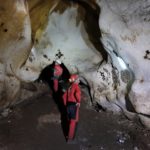
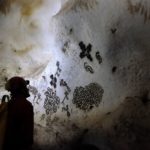
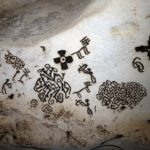
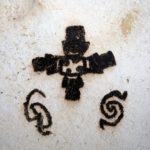
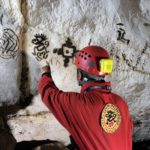



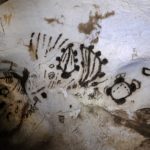
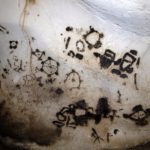
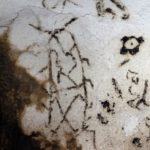

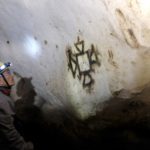
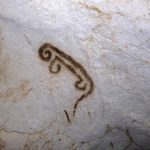
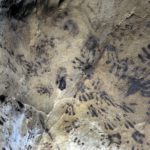
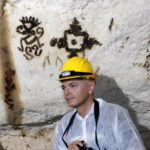















Facebook
Instagram
RSS